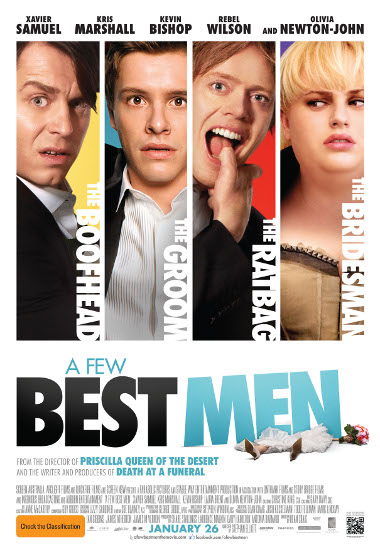Conciliation seems like a great idea to take some strain off the legal system. It is an idea that is flawed however. For writer/director Michael Rymer, playwright David Williamson and a cast of ten principle actors, conciliation acts as a useful space where an interesting process can be dissected. This is the general premise of Face to Face.
The film takes place in one room over 90 minutes. There are minor flashbacks, but essentially, the film runs in real-time. Wayne (Luke Ford) has been fired from his job as a labourer. Short tempered, he intentionally smashed into his boss’s car; an after shock to his sacking. In an attempt to reach a resolution out of court, a conciliation session is called upon.
The conciliation session is inhabited by Wayne; his mother Maureen (Lauren Clair); his best friend Barry (Josh Saks); his boss Greg (Vince Colosimo) and his wife Claire (Sigrid Thornton); co-workers Richard (Chris Connelly), Hakim (Robert Rabiah), Therese (Ra Chapman) and Julie (Laura Gordon); and finally the conciliator Jack (Matthew Newton).
The most explicit theme of the film deals with the notion of moral accountability. As well as this it also ambitiously deals with workplace bullying, infidelity, domestic abuse, anger management, racism and discrimination. All of these themes make for fantastic tension and provide terrific insights into characters motivations.
Assigning blame becomes one of Face to Face‘s key functions. The film challenges the audience to pick a side. Initially, there is a clear divide and distinction between two parties. As the film progress, the tables turn, and blame is shifted. Who is really responsible for Wayne’s outburst? The film tends to side against one particular character, rather than sticking with the initial ambiguity.

Use of flashbacks extends to extinguish or igniting blame. In one flashback, we see a younger, precocious Wayne (Calan McKenzie) severely beaten by his menacing father. With the aid of this flashback, substantial material helps realise background information crucial to resolution of the session.
The biggest flaw of Face to Face is that its resolution is extremely too convenient. The film begins with such a complex storyline that slowly unravels into many different complex issues. The development is terrific, but it seems completely implausible that 90 minutes could solve al of these problems. The dramatic material supplied in this one meeting would be enough to fill several sessions. Alternative options could see the material interestingly and appropriately dissected in a mini series or serial format. Another option would be to finish the film without an actual resolution. All of these options seem more consistent with the challenging material that becomes resolved in such a short amount of time.
It has some awkward moments that are purposeful, but still awkward nonetheless and seem almost unnecessary. Their purpose seems to provide for some comic relief, which it does, but acts more as a distraction. Redemption in confrontational characters also seems out of place, or at least to the degree in which it is shown.
Placing all of the characters in one room is something usually only seen on stage, and noticeably defines the film’s theatrical roots. One of the films greatest assets is that all of the characters are omnipresent. This is a good thing, as the characters are strong and played proficiently by formidable actors.
Luke Ford and Sigrid Thornton are the best in show and deserve to be singled out as such. This however, does not dispel any of the solid performances from the rest of the cast.
Thornton manages to keep the audience guessing with constant shifting reactions with each revelation regarding her husband and his workplace. It is seldom clear what she is actually thinking, but it is obvious that she is having an adverse reaction. In her few actual exchanges, we see a damaged and conflicted woman who manages to assert her feisty opinion with much force.
Luke Ford is finally offered a role that displays the talent seen in The Black Balloon (which he won an AFI award for.) Since then, he has been fine in a number of average supporting roles. Face to Face allows him to show off a tremendous versatility between mentally anguished and violently dangerous.
Translating play to film naturally sees problems and it is difficult to discern if the faults lie in the play or the screen adaptation, without having seen both. Despite this, the text seems an interesting and appropriate choice to show to a high school demographic in relation to its bullying dissection.
Riveting and completely engrossing, Face to Face is made for that “after-film-discussion”. Pledging character alliances and keeping updated with the constant exposition revealed kept this viewer alive and intensely interested.
Face to Face is released through the Australian Film Syndicate.
[youtube=http://www.youtube.com/watch?v=aHXfBOvdqPg]






